Is there a motor that can travel linearly up and down a threaded rod. I already know that you can attach a motor to the end of a threaded rod and make a nut travel along the threaded rod but this is not what I'm trying to do. For example, if the magnets inside a stepper motor were threaded like a nut, then when the motor spins it will travel along the rod. Is there anything like this already made?
Asked
Active
Viewed 2,103 times
4
-
1First I think it makes more sense to make the rod rotating rather than make the nut rotating. Most of the cases this make the moving part light (motor is heavy). – user3528438 Aug 09 '17 at 14:37
-
1and you have to deal with the length of the connections. – Solar Mike Aug 09 '17 at 14:57
-
@user3528438 I can think of applications where it makes a perfect (well, almost) sense. Think of some self-powered railed vehicle, while the threaded rod is used instead of the rail (or together with the rail). – Eugene Sh. Aug 09 '17 at 15:02
-
What keeps you from having a regular motor outside the threaded rod and driving a nut on the threaded rod with that motor? As you already established a nut is a perfect match for a threaded rod, therefore it makes sense to use it. The threaded rod would be fixed and the motor not co-axial to the rod in this scenario. Maybe you will need to add a belt or something similar to the motor and nut. – Burak Aug 09 '17 at 14:32
-
This does not answer the question. – Sclrx Aug 09 '17 at 14:33
-
Size constraint maybe? – user3528438 Aug 09 '17 at 14:34
-
Have you considered a linear motor? – Eric Brown Aug 09 '17 at 21:26
2 Answers
10
There are "hollow shaft motors" similar to these. The inside of the shaft can be threaded (or a nut can be fitted inside) to make the motor itself travel along a matching threaded rod.

Eugene Sh.
- 9,986
- 2
- 26
- 41
4
I believe that many years ago I saw a motor spec sheet that featured a hollow, threaded shaft, and here is a modern one.
The problem is that you need some way to prevent the motor housing from spinning in the opposite direction, in the worst case causing the motor to remain stationary on the threaded rod. Given the mechanical demands of doing this, it's a technique that isn't used much.
WhatRoughBeast
- 59,978
- 2
- 37
- 97